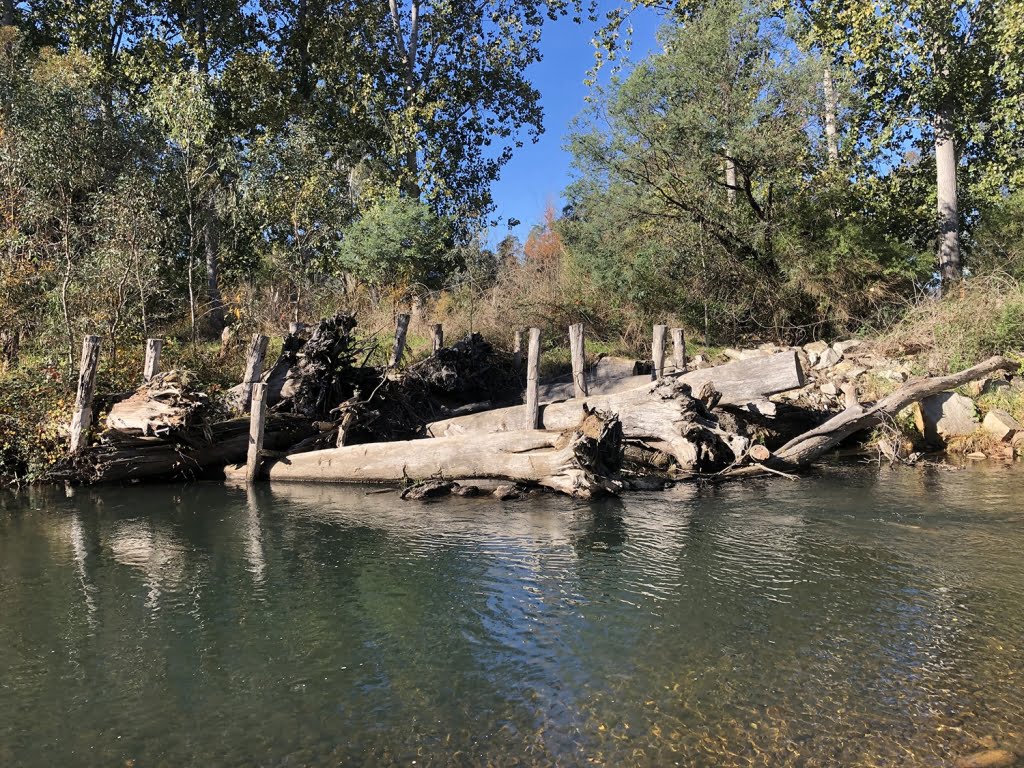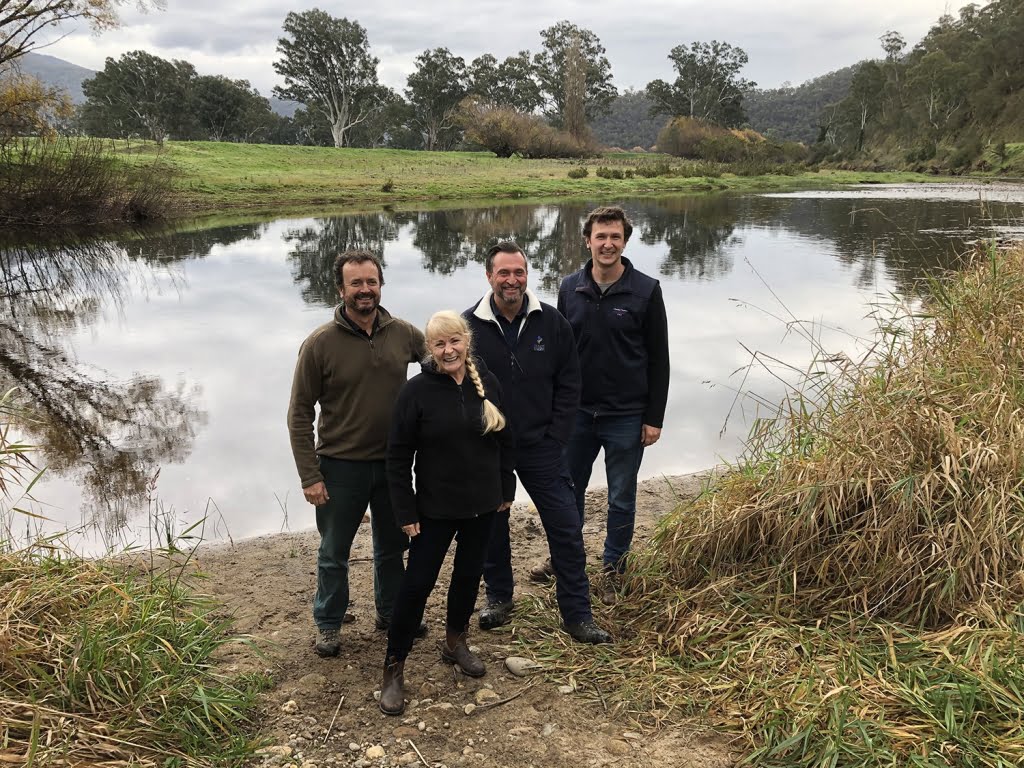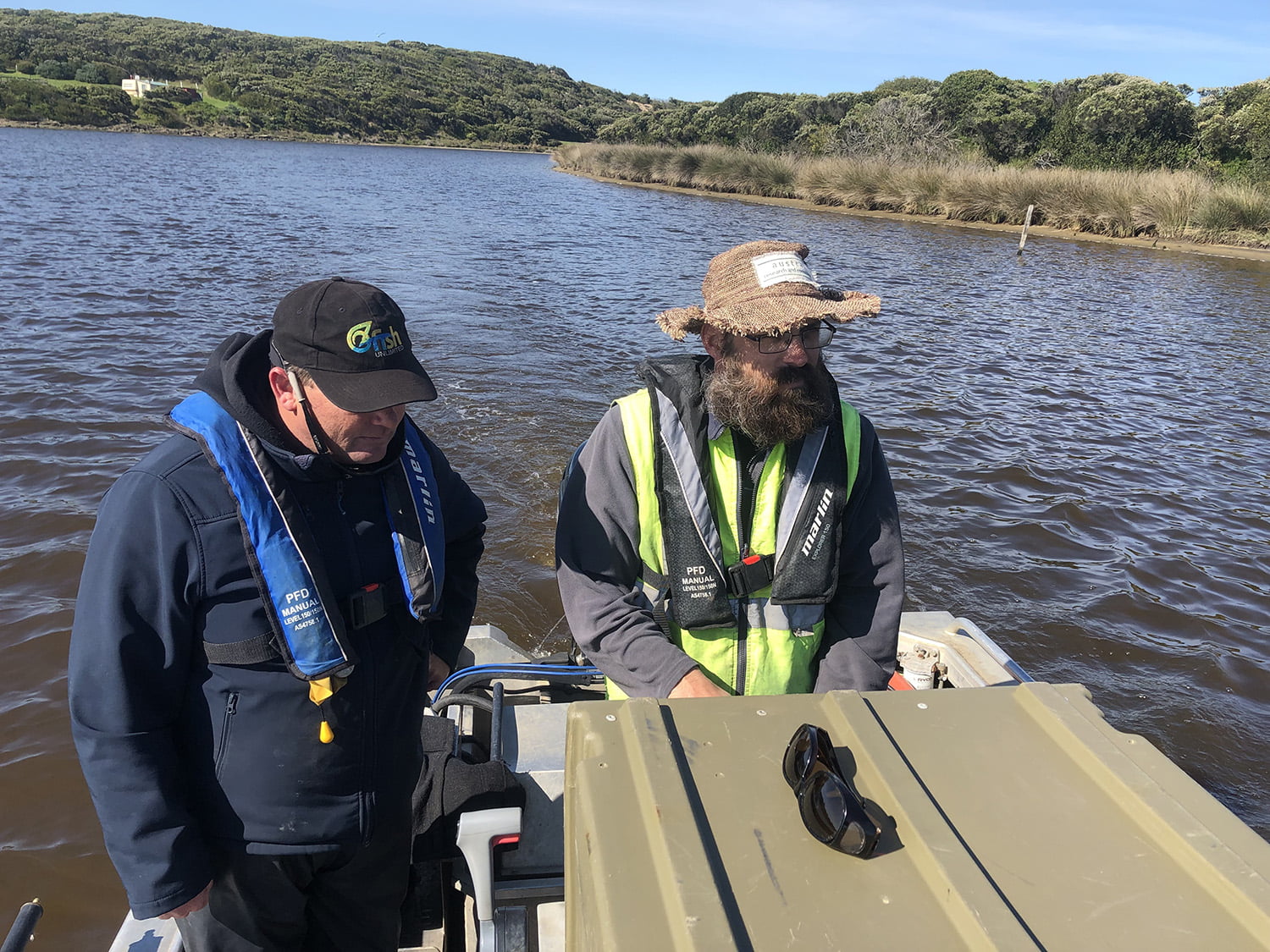Mentee: Alex Lewis – Water Resources Planner – Glenelg Hopkins CMA
Mentor: Jamie Kaye – Principal Scientist – Water Technology
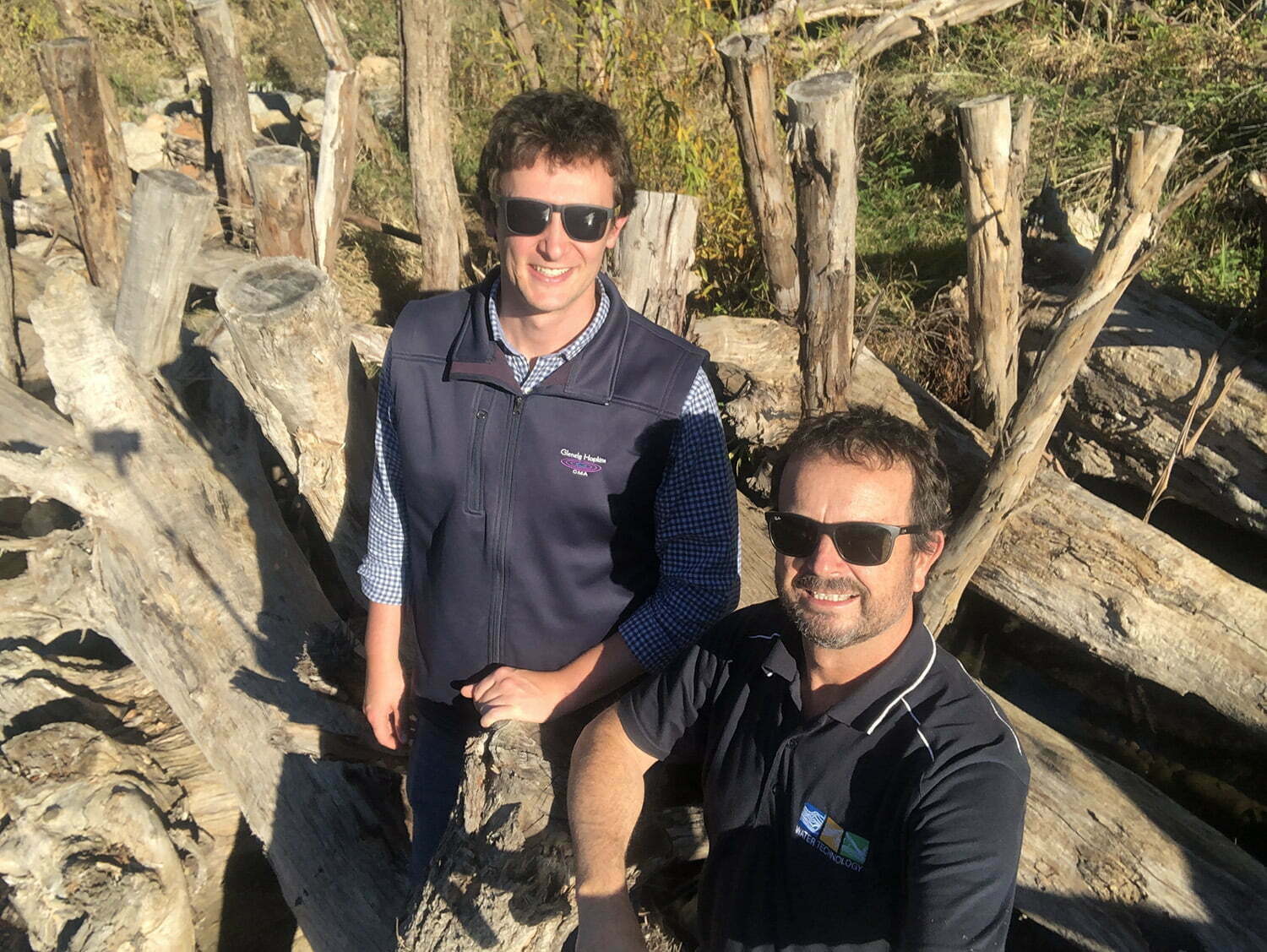
Our goals:
Getting wood into rivers for fish takes time, money and lots of collaboration. Our project focused on identifying new sites for fish habitat works in the Glenelg Hopkins region, as well as producing documents to assist local government and similar agencies to construct fish habitat, rather than burning or chipping trees and woody debris, that may be as a result of other land use activities.
We also wanted to make the most of our Twinning experience by coming into the Program with an open mind, a willingness to try new things and a desire to make new networks and connections with others working in the waterway sector.
What we did:
Following the final day of Workshop One in Warrnambool, Alex took Jamie to the Merri River to show him some of the works from the previous fish habitat program. This provided context about methods adopted to date, and helped in discussing the outcomes and challenges faced during that project.
Before the second workshop in June, Jamie invited Alex up to the North East region to view and discuss habitat works that North East CMA had completed. During the visit Alex viewed multiple fish habitat sites that adopted a variety of approaches. This was invaluable, as the North East CMA has a well-established program of woody habitat restoration. We even took to the water to paddle around some fish habitat structures on the Ovens River.
We then caught up with another twinning pair Mick and Patricia. Mick gave a tour of their Twinning project site at the Katie Peters Reserve, and then took us to see a quarry that North East CMA use to source large boulders and stockpile large wood. The fish habitat program in the North East provided plenty ideas and inspiration for works in the Glenelg Hopkins region.
At the second workshop we worked on a plan going forward for the project. This plan got slightly overshadowed as other commitments came up, but we persevered. After using a desktop assessment to select a series of sites across the Glenelg Hopkins region, Alex went out with a consultant and local angler to further evaluate each site. They used bathymetry and side-scan sonar to build an image of what was happening underwater. This helped to understand the existing state of habitat in those waterways and how it might be improved. The field assessments also allowed Alex to determine if the work could feasibly be undertaken at those locations. Some sites were found to be more difficult to access than first thought.
The result:
The Glenelg Hopkins CMA now has a series of sites across three different river systems that are suitable for fish habitat restoration works. These sites can now be put forward as options for works when funding opportunities become available. They can also be used to engage with local government and agencies to demonstrate what works could be done in their areas.
Through the Twinning project Jamie has provided excellent advice and introduced Alex to other CMA staff working with fish habitat. These connections are immensely appreciated, and have been a real “value add” to the project.
The final part of our project is still underway, and we will continue to work on it even though the Twinning program has finished. Overall, this project allowed the CMA to set the groundwork for a future fish habitat program in the region. If you would like to know more please get in touch with Alex Lewis at the Glenelg Hopkins CMA (contact details below).
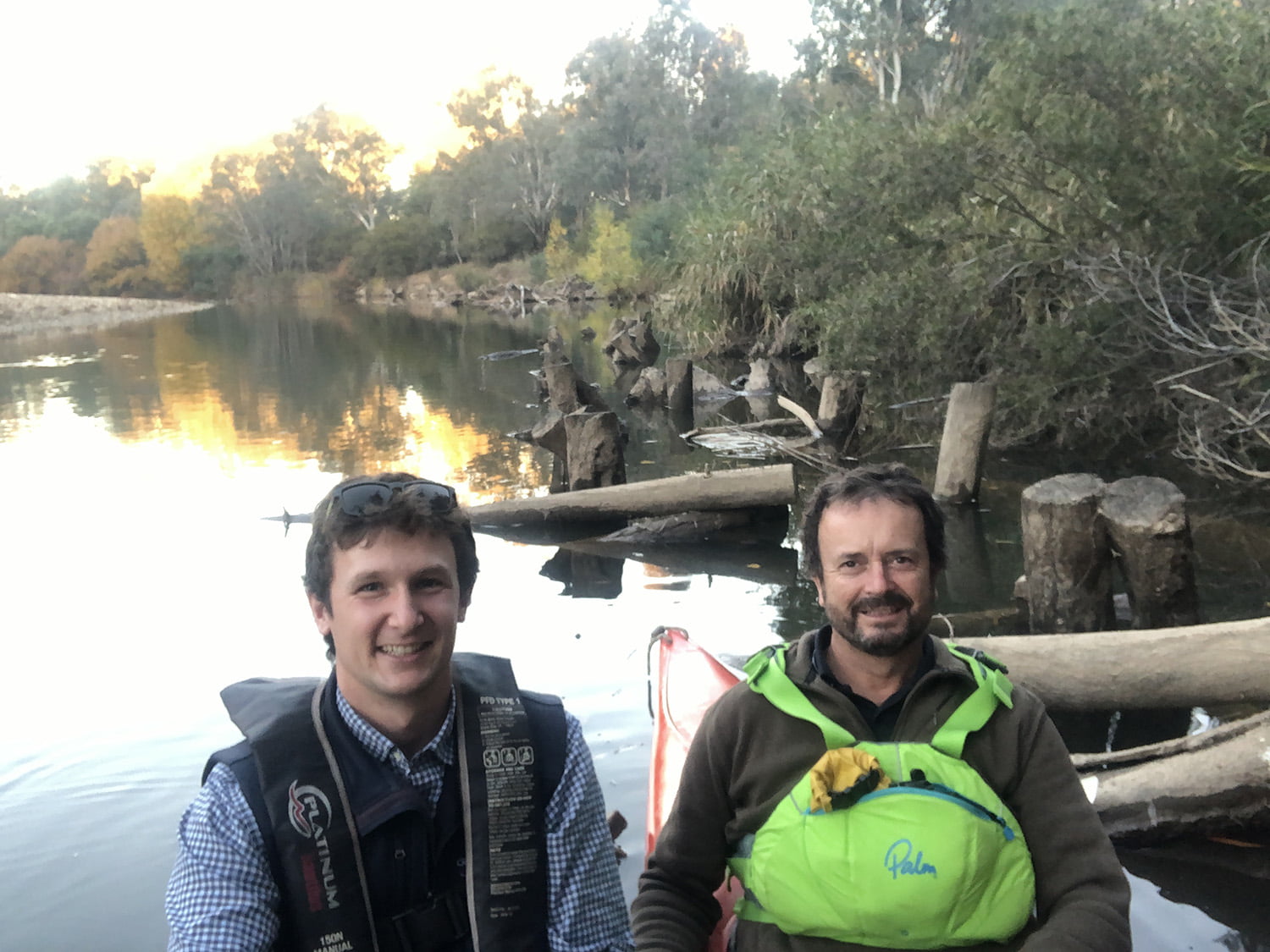
What did we gain personally?
Both Alex and Jamie formed special relationships with all participants in the program. Connections were also made with other people in the waterway management industry. These relationships are very special as they connect people of different levels, in different organisations, right across Victoria. Many interpersonal and communication skills have been learned and are now adopted day to day.
This program has help confirm WHY we are in this industry, doing what we do and making a difference.
For me the Twinning program highlighted all the reasons why I wanted to work in the environmental field, and waterways in particular. The people in the program were easy going, open minded and most importantly passionate about what they do. Being relatively early in my career this is good to see and gets me excited for the future. Learning the value of ‘why’ and that it’s ok to express yourself will hold me in good stead through all aspects of my career and life.
Being able to work with Jamie was a fantastic opportunity for me. His knowledge of waterways is immense and it’s clear that he enjoys what he does. You only have to look at his River Ramblings blog to get a sense of what river mean to him. I look forward to working with Jamie to finish off our Twinning project and keep in touch for a long time to come.
– Alex
I didn’t quite know what I was able to offer, nor what I might get from the Waterways Twinning Program. It was difficult to predict, even though previous participants had raved about the learnings and the friendships they made. It was not without some trepidation that I joined a group of mostly unknown fellow waterway practitioners on the 2019 Twinning journey.
The relationships developed between all the participants within this program were quite amazing. Very quickly we learned that vulnerability is not just ok but seen as an endearing quality. People opened up early in the program allowing strong relationships to develop from the first workshop.
It was not coincidental that I was partnered with Alex, an enthusiastic young fella pursuing a project in an area of river management that I was already passionate about. That helped us easily communicate the issues and solutions, however, there were a number of other partnerships that paired people from very different fields, but they too worked really well together.
This program brought together some very special people that show passion and enthusiasm in the waterways industry. Thanks to this Twinning Program, we are armed with new skills and relationships that will help us all make a real difference to our waterways.
Thanks to Siwan and Jan in particular for guiding us through this program, and thanks also to Alex and all the twinners for making this such a wonderful experience.
– Jamie
Contacts:
Alex Lewis – a.lewis@ghcma.vic.gov.au
Jamie Kaye – Jamie.Kaye@watertech.com.au
Join the Twinning Program
The Waterway Management Twinning Program is a structured mentoring program, focusing on improving the on-ground delivery of current Victorian riparian restoration projects. This Program provides an opportunity for the most effective approaches to be shared and adopted between all those working in waterway management across the State.




